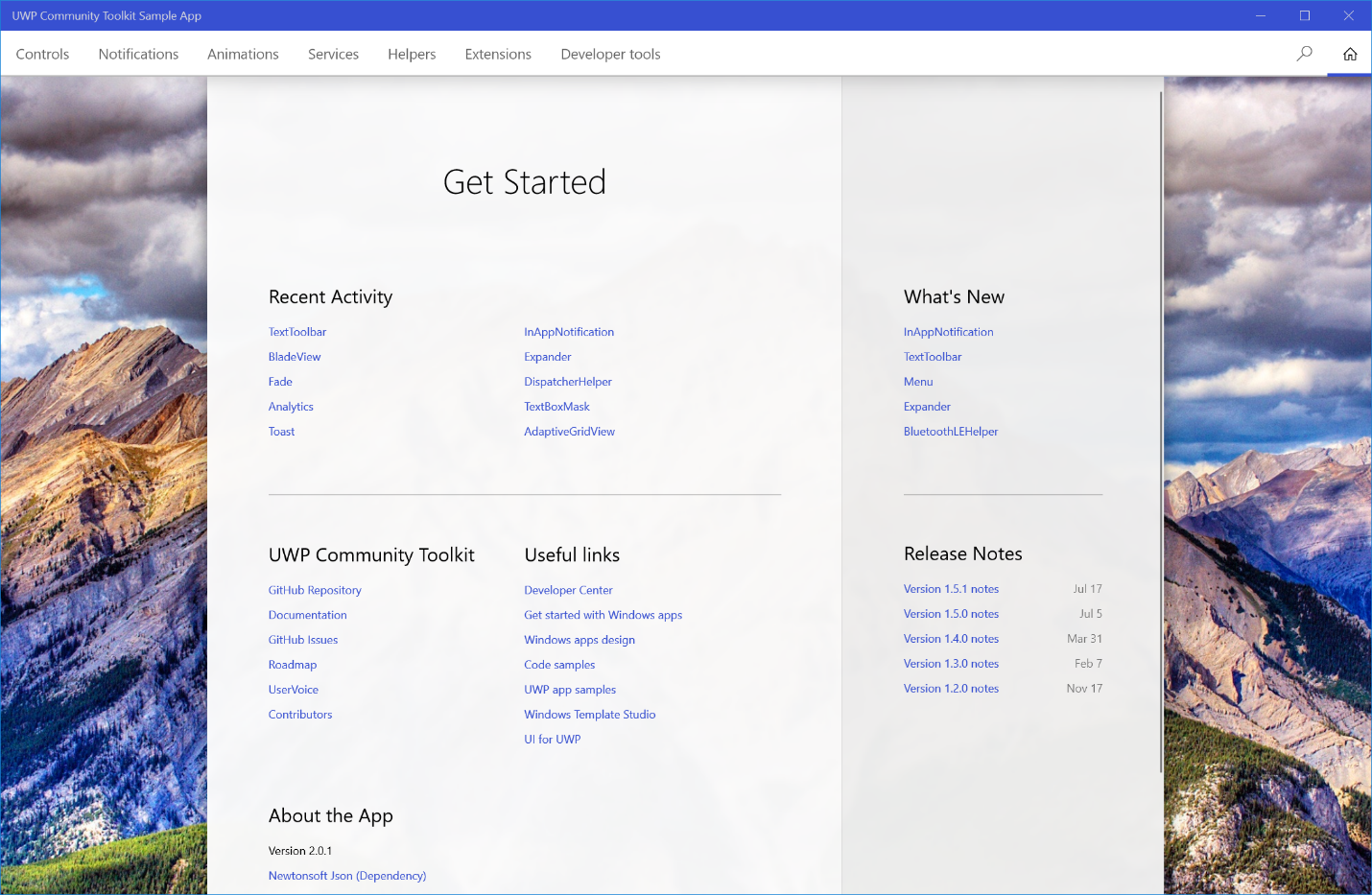
Microsoft announced that its UWP Community Toolkit graduated to version 2.0 and it sets the stage for future releases. Today, there are over 100 contributors to the toolkit, and developers have downloaded the packages over 250,000 times.
With version 2.0, the toolkit is making efforts to line up with the latest Windows 10 Fall Creators Update to enable developers to take advantage of the new APIs and the Fluent Design System. The Fluent Design System will see new and existing controls updated in the coming months, and a sample app will also be updated to take advantage of new foundational elements.
Also, according to a Microsoft Windows blog:
“Version 2.0 introduces two new packages: Microsoft.Toolkit and
Microsoft.Toolkit.Serviceswith the commitment to support more cross platform APIs in future releases. These packages are built with .NET Standard and support any platform with .NET Standard 1.4 and above. The Bing Service is the first API to go cross-platform and there is currently work underway to move more services to the new packages.”
XebiaLabs expands its DevOps Platform
XebiaLabs expanded dual-mode DevOps capabilities in its XebiaLabs DevOps Platform version 7.1. These features give developers using Jenkins and other code tools the ability to tie in continuous integration automation into their enterprise continous delivery processes.
XebiaLabs dual-mode DevOps approach supports DevOps users across the enterprise, and it delivers new code-centric features like Environment as Code. This allows teams to “define deployment infrastructure and environments in code, making it easier for Development and Operations to collaborate on configuration management,” according to an announcement from XebiaLabs.
Amazon announces Amazon EC2 Elastic GPUs for Windows
Amazon has announced the wide release to Amazon EC2 Elastic GPUs for Windows, which can be attached to an Amazon Elastic Compute Cloud instance to boost graphics performance of an application.
They are designed for applications running on the Amazon’s cloud computing platform that require limited or intermittent boosts in graphical overhead compared to their other cloud GPU offerings like the G3 and G2.
Developers using the bare minimum of increased graphical horsepower with the Elastic GPUs can see as much as an 80 percent cost-reduction compared to the G3 and G2 line.
The EC2 Elastic GPU currently supports the OpenGL API standard with more coming soon.
Kernel self-protection with Android 8.0
According to a blog post from the Android developers team, Android 8.0 focuses on kernel self-protection with four security hardening features, which are backported from upstream Linux to all kernels supported in devices that first ship with the Android Oreo release.
Sami Tolvanen, senior software engineer at Android Security, wrote:
“Android Oreo includes mitigations for the most common source of security bugs in the kernel. This is especially relevant because 85% of kernel security bugs in Android have been in vendor drivers that tend to get much less scrutiny. These updates make it easier for driver developers to discover common bugs during development, stopping them before they can reach end user devices.”
Details on how the security team is hardening the kernel in Android Oreo can be found here.





